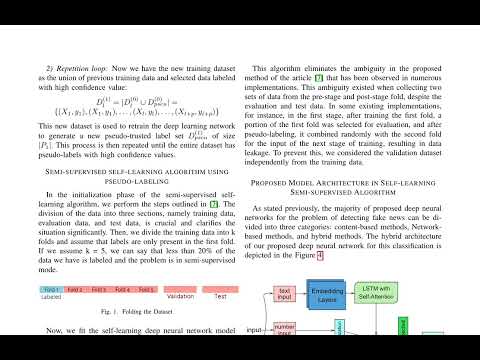Original paper: https://arxiv.org/abs/2407.19332
Title: A Semi-supervised Fake News Detection using Sentiment Encoding and LSTM with Self-Attention
Authors: Pouya Shaeri, Ali Katanforoush
Abstract:
Micro-blogs and cyber-space social networks are the main communication mediums to receive and share news nowadays. As a side effect, however, the networks can disseminate fake news that harms individuals and the society. Several methods have been developed to detect fake news, but the majority require large sets of manually labeled data to attain the application-level accuracy. Due to the strict privacy policies, the required data are often inaccessible or limited to some specific topics. On the other side, quite diverse and abundant unlabeled data on social media suggests that with a few labeled data, the problem of detecting fake news could be tackled via semi-supervised learning. Here, we propose a semi-supervised self-learning method in which a sentiment analysis is acquired by some state-of-the-art pretrained models. Our learning model is trained in a semi-supervised fashion and incorporates LSTM with self-attention layers. We benchmark our model on a dataset with 20,000 news content along with their feedback, which shows better performance in precision, recall, and measures compared to competitive methods in fake news detection.









![How to use HypeSquad.ai [Video]](https://aimarketingshowcase.com/wp-content/uploads/2024/10/mp_536107_0_0jpg.jpg)

![The best PC hardware and software of 2024/2025 [Video]](https://aimarketingshowcase.com/wp-content/uploads/2024/11/mp_548466_0_PCWBestof2425sandrokatalinak1bOVTiZSsjpg.jpg)
![Tech Entrepreneur Kerry W. Kirby to Discuss Empowering Renters with Technology Tools in Live Webcast | PR Newswire [Video]](https://aimarketingshowcase.com/wp-content/uploads/2024/11/mp_548462_0_67335c7bdf69cimagejpg.jpg)
